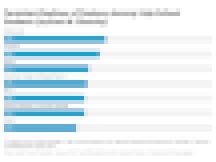Celina Pierrottet remembers 2016 as the year when she and her colleagues at the middle school where they taught noted a pointed change among their students.
“We were just like, ‘Is it just me, or are kids really nervous?’” Pierrottet recalls. “That year we had a lot of kids who were displaying some sort of school avoidance and other behaviors that we hadn't quite seen as much. I remember my colleagues and I looking at each other like, ‘It's more this year’ — and then fast forward to the pandemic.”
The rise in mental health needs among students following the start of the COVID-19 pandemic catalyzed the U.S. Surgeon General to declare a youth mental health crisis, and the federal government has rolled out billions of dollars since then to help schools respond.
But Pierrottet, who now works as associate director of student wellness at the National Association of State Boards of Education, noted in a policy brief a major hurdle in getting students the help they need: an inadequate supply of mental health professionals, specifically those credentialed to work in schools.
Here’s what she found is standing in the way — and how states are finding solutions.
Slim Pickings
One issue is that growing the number of mental health professionals in schools takes time. Investments made into increasing the pipeline now won’t see results — in the form of hireable mental health workers — for several years.
During Pierrottet’s research, she found that officials on Nevada’s State Board of Education noted in April of last year that the state’s prep programs for mental health professionals only graduate 12 people each year. At the time, the state had a shortage of 2,863 school mental health professionals.
“It continues to be a challenge because it’s a profession that requires advanced coursework,” Pierrottet says. “No one’s saying they need to change those requirements, but it’s a slow investment.”
There’s also the need to ensure that school mental health professionals — be they school psychologists, social workers or counselors — reflect the demographics of the students they serve, she adds. One of the challenges is that, like their classroom teacher colleagues, mental health professionals-in-training have to complete hundreds of unpaid practicum hours.
Pierrottet points to Virginia and Ohio as examples of states that have responded to that hurdle by creating programs that pay graduate students studying mental health care to work in schools. The 2019 program in Virginia “placed graduate students in school district positions and provided 200 trainees with financial incentives to work in schools,” according to her report, and Ohio has a similar, decades-old program for school psychologist interns.
“Slow and steady wins the race here in making sure that schools are attracting candidates that are diverse, that meet the diverse needs of their students,” Pierrottet says.

Managing the Workload
But the immediate mental health needs have created crushing workloads for counselors.
Pierrottet writes in her policy paper that national trade organizations recommend student-to-professional ratios of 1:250 for school social workers, 1:250 for school counselors and 1:500 for school psychologists.
There’s a long way to go to ease workloads for all three types of positions. No states meet the recommended ratio for social workers, while Pierrottet found only New Hampshire and Vermont have better caseloads than the recommendations for counselors. For school psychologists, only Idaho and Washington D.C. do better than the recommended ratio.
Some states have gotten creative to increase the availability of mental health professionals in their schools, like turning to telehealth for counseling services.
It’s not just school staff anymore who are alerting counselors that students need mental health support. One of the forces driving the increased demand for services is simply that students are asking for them, she notes, as evidenced by the federal School Pulse Panel. The most recent results show that 69 percent of schools report an increase in students looking for mental health support since the COVID-19 pandemic began.
“Schools are saying there's actually just a growing demand for more mental health services in schools from students themselves who are just expressing more anxiety in schools,” Pierrottet says. “Sometimes it can be an issue if students are saying, ‘I need this,’ but they can't get that connection in the school or maybe even outside of the school.”

Footing the Bill
A win for increasing staff levels is that states have gotten funding for school mental health services from massive federal cash infusions, Pierrottet says, like $188 million from the 2022 Bipartisan Safer Communities Act. The U.S. Department of Education projects that one of its grants will lead to more than 14,000 more mental health professionals in schools, according to the policy paper, and new federal guidelines are making it easier for schools to bill mental health services to Medicaid rather than pulling money from their own budgets.
That doesn’t mean that getting states to fund mental health services has been easy. Yet Pierrottet says that the programs she highlights in her report have benefited from states having what one analysis called an “all-time high” of financial cushion due to budget surpluses — a result of factors including COVID-19 relief funds and higher-than-expected tax revenue. States like Michigan and Texas — both of which are looking at billions in surplus dollars — this year — are putting some of those funds toward mental health spending. Michigan has hired more than 2,700 full-time licensed behavioral health providers in schools since 2019, the report highlights, while Texas has set aside $280 million for telehealth counseling in schools starting in 2024.
“I think that right now there has been more success than in previous years because of this crisis, right?” Pierrottet offers. “It would be more difficult if there wasn't a surplus right now in the budget. I think right now, the stars are aligning. There is will, there's motivation, and so at least in the last year there was some movement toward funding.”
Pierrottet added that it’s important not to think about students’ mental health needs as something that can be solved with funding alone. Rather, she described it as an issue that needs to be addressed from multiple sides. For example, some teachers are enthusiastic about getting more training about how to support student mental health, she says, and those teachers likewise need support for their own mental well-being in order to be effective in the classroom.
“It's important to think of this holistically,” she says. “When students are healthy and when they're not having these anxious feelings, they're present, they're able to learn. So it's important for state leaders to think of this as not just, ‘Oh, we need to provide more mental health staff.’ It's about the whole continuum, the comprehensive school mental health system, and looking at it through a whole child” lens.



